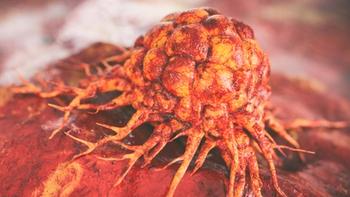
Oncology NEWS International
- Oncology NEWS International Vol 4 No 5
- Volume 4
- Issue 5
Aminopterin, First Studied in 1948, Appears Poised for Comeback in ALL
NEW ORLEANS--An antifolate that has been "shelved" for decades appears to be more potent than methotrexate in the treatment of childhood leukemias and could prove particularly helpful in patients who are not likely to respond to the traditional agent.
NEW ORLEANS--An antifolate that has been "shelved" fordecades appears to be more potent than methotrexate in the treatmentof childhood leukemias and could prove particularly helpful inpatients who are not likely to respond to the traditional agent.
Dr. Barton Kamen, professor of pediatrics and pharmacology atthe University of Texas Southwestern Medical Center, Dallas, comparedmethotrexate with a closely related but more toxic antifolate,aminopterin, in an in vitro study of radiolabeled drug uptakeby lymphoblasts taken from acute lymphocytic leukemia (ALL) patients.
The study was initiated to foster understanding of drug resistanceto meth-otrexate due to lack of accumulation in the cells, hesaid.
Dr. Kamen, a 1994 American Cancer Society (ACS) Clinical ResearchProfessor, described his study at the ACS Science Writers Seminar.
He said that aminopterin was the first chemotherapeutic agentused for acute leukemia in childhood, the subject of a reportby Dr. Sidney Farber in the New England Journal of Medicine in1948. In the 1950s, it was replaced by methotrexate because ofconcerns over toxicity.
"Aminopterin was more toxic than methotrexate, and the toxicitywas unpredictable; that was the problem. It was contaminated;it was not a pure drug," Dr. Kamen said. Today, aminopterinis available only through chemical supply houses.
Dr. Kamen's study has identified leukemic cells that accumulatefolate in a "normal" manner, and cells that fail toaccumulate methotrexate but do accumulate enough aminopterin tomake treatment success likely with the older drug. "Thesedata allow the suggestion that aminopterin, despite early reportsof unpredictable toxicity, may be the better of the two antifolates,"he said.
Dr. Kamen believes that our current knowledge of folate homeostasisand new analytical techniques should allow physicians to monitorfor signs of toxicity and thus permit clinical testing of theagent in leukemia patients.
Uptake Nearly Doubled
The study found that aminopterin uptake was nearly double thatof methotrexate in the cell cultures. Based upon the value of500 pmoles of drug per 109 cells, 86% of the aminopterin-treatedsamples demonstrated "pharmacologic success," comparedwith only 61% of methotrexate-treated samples.
Related research showed that this level of drug uptake predictstherapeutic success in patients, he said. Moreover, almost halfthe samples were able to achieve pharmacologic success with afraction of the amount of aminopterin, compared with methotrexate.
He said that the study has been repeated in cell cultures frompatients with T-cell leukemia, and these cells expressed an evengreater preference for aminopterin: Only one of five samples accumulatedsignificant amounts of metho-trexate, but five of five took upsignificant amounts of aminopterin.
"My bet is that aminopterin is 10 to 20 times more potentthan methotrexate and we can use less of it," Dr. Kamen commented.
Articles in this issue
over 30 years ago
Genetic Therapy Gets NIH Patentover 30 years ago
Fusion Product Delivers Potent Toxin to Malignant Cellsover 30 years ago
Retinoic Acid May Enhance Chemo In Ovarian Ca Cellsover 30 years ago
Compounds Block ras Gene Function Compounds Block ras Gene Functionover 30 years ago
Companies Merge to Form NeXstarover 30 years ago
Antiangiogenesis Tested in Pediatric Tumorsover 30 years ago
New Director Attends Office of Alternative Medicine Advisory MeetingNewsletter
Stay up to date on recent advances in the multidisciplinary approach to cancer.

















































































